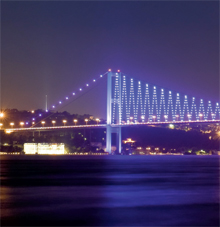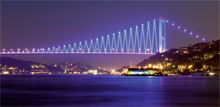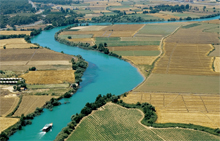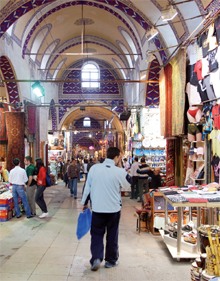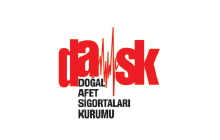Hulusi Taskiran: Chairman of the Association of Insurance and Reinsurance Companies of TurkeyMARKETS
Born in 1957 in Istanbul (Turkey). Achieved BA degree at the faculty of Business Administration at Bosphorus University in 1980 and joined the insurance industry at the beginning of 1981.
He worked for the insurance company Sark Sigorta (now Allianz) between 1981-1988. In late 1988 he left the company as the manager of marine department and joined T. Genel Sigorta as the assistant general manager in charge of marketing and technical affairs. He became the general manager of the company in May 1993.
At the same time, he had been the founding general manager of Genel Yasam Sigorta between 1998-2003. In 2001 he became the CEO of both companies until 31.12.2008, when he retired. He is Vice Chairman of the Board of MAPFRE Genel Sigorta and MAPFRE Genel Yasam Sigorta.
He was elected the chairman of “the Association of Insurance and Reinsurance Companies of Turkey” in 2005 after 6 years as a board member. He has been re-elected twice since then.
He is also the chairman of the Insurance Guarantee Fund and chairman of the mutual Agricultural Company called Tarsim A.S which is in charge of all operations on behalf of the industry and State agricultural pool.
Mr. Taskiran has been married since 1985 and has a son of 16.
"Harmonisation with EU directives has been strictly followed"
Turkey is a fascinating country as is its insurance
market which combines the European
traditional approach with the Asian potential
to grow. What is your vision of the strategy and
targets of insurance companies in Turkey?
One of the main concerns of insurance companies
in Turkey is to increase public awareness
of the importance of insurance as there is great
growth potential in this young and dynamic country.
With this in mind, the Association of Insurance
and Reinsurance Companies of Turkey has launched
a new advertising campaign to draw
people’s attention to the importance of insurance
in their daily lives.
Another key target of insurance companies is to
increase their financial strength to meet international
standards by enhancing their value and
implementing a customer-focused approach to
services.
As at May 2009, there are 61 insurance and
reinsurance companies in Turkey, 59 of them
being insurance companies (23 life and 36 nonlife)
and the remaining 2 being reinsurance
companies. Of these, 54 insurance companies
and 1 reinsurance company are active. The number
of people employed in insurance companies
is 16,019. There are 13,579 agents and 70 brokers
active in the market.
Between 2003 and 2006, Turkey’s premium income
as a percentage of its GDP (figure 2) gradually
increased from 1.43 % to 1.68 %. The drop
registered in 2007 is due to the fact that the
method for calculating Turkey’s national income
was changed. In fact, Turkey’s national income
in 2007 increased substantially compared to
2006. In 2008, Turkey’s premium income as a
percentage of GDP was recorded as 1.24 %,
compared to 1.28 % in 2007. This drop can be
ascribed to the impact of the global financial
crisis on the Turkish insurance market.
Could you briefly explain the history of the
Association of Insurance and Reinsurance Companies
to us, from your privileged position as
President? What is its role? What were the
milestones of the Association and what are its
current prospects?
The history of insurance in Turkey dates back to
the 1870’s. At that time, insurance transactions
and services were mainly carried out by foreign
insurance companies. In 1900, insurance companies
operating in Turkey decided to join under the umbrella of a “professional organisation”
and established the “Insurers’ Syndicate of
Turkey”, which had 81 members, all of them
foreign companies.
After the proclamation of the Republic in Turkey
in 1923, this Society was abolished and
“The Club of Insurers” was established in 1924,
which then took the name “Central Office of
Insurers”. In 1952, some of the members of
the Office established “The Association of
Insurance Companies of Turkey”. On the same
date, the Central Office of Insurers adopted
the name “Office of Insurers of Turkey”. In
1954, both organisations merged under the
name “Association of Insurance and Reinsurance
Companies of Turkey”. It was not until
1975 that the Association adopted the name
it uses today; “The Association of Insurance
and Reinsurance Companies of Turkey”.
The Association of Insurance and Reinsurance
Companies of Turkey is a specialised institution
with the characteristics of a unique nongovernmental
institution established by law.
Within the context of the Insurance Supervision
Law, the Association is a legal entity established
for the development of the insurance profession,
the implementation of the principle of solidarity
among insurance companies, the elimination of
unfair competition among members and the
preparation and implementation of any official
duty transferred to it by the Regulatory Body.
Membership is compulsory by law; therefore all
insurance and reinsurance companies operating
in Turkey are members of the Association.
Premium Income (2003-2008) in USD
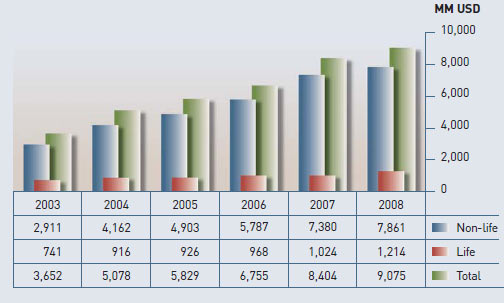
What are the main events where Turkish insurance
companies meet? What about regional
conferences where the neighbouring players
exchange ideas? Does Turkey play a leading
role in discussions as an advanced competitor?
The Association organises national and international
conferences every year. These conferences
bring together the managers and staff of insurance
companies, government officials, academics
and all other stakeholders in the sector.
In this context, we have organised international
conferences in cooperation with the OECD and
the World Bank. We hosted the CEA (European
Insurance and Reinsurance Federation) General
Assembly in 2006 and we will be hosting
the IMIA (International Association of Engineering
Insurers) General Assembly this year in
September.
Regarding our efforts in neighbouring markets,
we held the “Eurasian Insurers Conference” in
Istanbul in December 2004, with the participation
of insurers from Azerbaijan, Georgia, Kyrgyzstan,
Uzbekistan, Kazakhstan and Moldova. This Conference
provided a platform for Eurasian insurers to come together and discuss various issues.
As an advanced competitor, Turkey provides
Eurasian countries with the necessary information,
expertise and know-how whenever required.
The Association also regularly attends meetings
of the CEA, OECD, IMIA and IUMI (International
Union of Marine Insurance) and follows developments
in insurance at European and global levels.
These are then shared with member companies
through comprehensive reports and working
papers prepared by the Association.
Premium Income vs GDP (2003-2008)
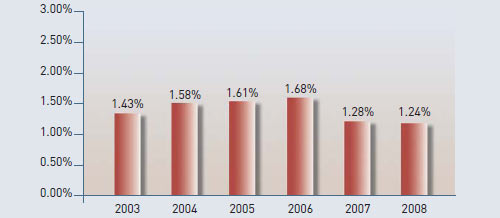
Insurance Law 5684 was approved recently, on
June 14th 2007. What has it meant from the
regulatory point of view in respect of the financial
strength of insurance companies?
In accordance with the new Law, harmonisation
with EU directives has been strictly followed in
fiscal and financial matters. The recent alteration
of the minimum financial requirements to match
not only premiums and claims but also risk basis
calculations, has helped to achieve a triple increase
compared with traditional methods. As
a result, the transparency of companies’ financials
has reached a higher standard with the
introduction of the new reserve requirements.
A committee has been established in the Treasury
Department, with a view to following developments
at EU level and accomplishing harmonisation
studies regarding EU Solvency II
requirements.
All these regulations have empowered the regulatory
authority whose main mission is to protect
the insured and maintain the healthy operation
of the insurance market.
As an advanced player, Turkey provides Eurasian countries with the necessary information, expertise and know-how whenever required.
What are the main difficulties that companies
will have to face in order to fully comply with
the Insurance Law? How does it rule in respect
of insured and agents?
The major inconvenience that companies will
face in order to fully comply with the Insurance
Law is related to the companies’ financial structures.
The changes in the calculation of companies’ capital requirements (solvency) and
the establishment of new technical reserves are
related to this issue. Also, the enhanced reporting
requirements will need supplementary work.
One of the most important new features of the
Insurance Law is the Insurance Arbitration Mechanism
that consists of independent and impartial
arbitrators, operating under the umbrella
of the Association. The aim of the Arbitration
Mechanism is to bring rapid and reasonable
solutions to the problems of consumers as well
as insurance establishments.
The “Regulation on Information Regarding Insurance
Policies” also supports this system by
enhancing consumer protection. When entering
into contractual relations and during the term
of a policy, the insured is provided with information
regarding the subject matter of the policy,
cover and other conditions, as well as any changes
or developments that might affect them.
With regard to agents, those who want to be
engaged in insurance agency work must be
registered in the Register maintained by the
Union of Chambers and Commodity Exchanges
of Turkey.
Turkish authorities, when establishing the TARSIM Model, were inspired by the Spanish model for agricultural insurance.
When dealing with technical aspects of insurance,
what has the Law established on enabled
branches, the role of actuaries within the companies
and earthquake claims reserves?
Branches have been reorganised in line with
EU directives. In this context, the Insurance
Uniform Accounting System has been modified
accordingly.
With regard to actuaries, the Law compels companies
to work with a sufficient number of actuaries.
The Treasury Department is held responsible
for keeping a Register of Actuaries.
Those who want to work as actuaries must be
registered. Principles and procedures relating
to the acquisition of “actuarial status” as well
as the duties and powers of actuaries are determined
by regulation.
With the new Law, the role of actuaries in companies
has been enhanced. Many foreign companies
have entered into the Turkish market and competition in the insurance sector has
increased remarkably. This competitive environment
provides the ground for actuaries to
have a supportive role in the determination of
tariffs in non-life branches as well. On the other
hand, Actuaries also have an important role to
play in the calculation of technical reserves,
such as IBNR.
Regarding earthquake claims reserves, the new
Law introduces the “equalisation reserve”, a
reserve which is allocated for insurance branches
determined by the Department to balance claims
rate fluctuations in future fiscal periods and to
meet catastrophic risks.
There is almost no country in the world whose
insurance market is not adapting its strategies
to the current financial crisis. Could you identify
problems and opportunities in the Turkish Insurance
market?
The problems we face because of the global
financial crisis are not as significant as those
suffered by the global insurance players. The
investments of Turkish insurance companies
have not been affected at all as these are entirely
local, mainly in government bonds or bank savings.
So we do not have any problem as far as
the quantity and quality of the assets is concerned.
The most important effect of the changing
environment on financials will be a reduced
amount of earnings on investments due to the
sharp decrease in interest rates.
As a result of the financial crisis, the regulatory
authority has taken additional measures. If insurance
companies make cessions to reinsurers
below a certain rating level, this will result in an
increase in their capital requirements.
The main problem we face is decreasing insurance
demand due to the shrinking economy.
The Turkish economy is expected to have negative
growth of 4 to 6% in 2009 and we are afraid
that the insurance market will face a worse
scenario in this respect. The reduction in insurance
demand is causing strong price competition
in the market which is the main problem
for the market. Therefore gross premiums seem
to fall not only because of shrinking demand
but also rate reductions. I am personally pessimistic
about this year both in terms of growth
and results.
I believe the size of the Turkish market is a great opportunity for any foreign player wishing to use their presence in Turkey as a bridge to the Turkic markets.
Talking about foreign investments in the insurance
market, what could be the advantages
and disadvantages of the arrival of foreign
shareholders?
There has been a substantial increase in foreign
entries into the Turkish market. Many international
groups are now active. As at the end of
September 2008, foreign owned insurance companies
had a share of 53.91% of the total capital
and a share of 75.22% of total premium income.
The interest of foreign groups is a clear indicator
of the growth potential of the Turkish market,
which is young and developing.
Know-how transfer and new employment opportunities
are important advantages of foreign
investment. However, if there is no insurance
awareness in society, increasing overall premium
income is impossible. Therefore new entries into
the market should be supported by new insurance
awareness campaigns and advertisements.
Otherwise, companies will continue to
have intense competition over a relatively small
and limited portfolio. Competition which has
always been fierce has become even more
aggressive with the entry of foreign investment
into the market. In 2006 and 2007, foreign investors paid around USD. 100 million for 1% market
share excluding excess capital and they seem
to be prepared to pay more to increase their
market share.
Another interesting solution was created
more recently for systemic risks, the TARSIM
pool. Do you think it will become as robust
as the US and Spanish models for agricultural
insurance?
TARSIM (Agricultural Insurance Pool) provides
insurance coverage for catastrophic risks that
threaten the Turkish agricultural industry and
which cannot be carried by a single insurance
company. Turkish authorities, when establishing
the TARSIM Model, were inspired by the Spanish
model for agricultural insurance. There are no
major differences between the systems in Spain
and Turkey. The system in Spain enshrines a
reinsurance company established by the State
and a managing company like TARSIM A.S of
which I am Chairman of the Board. The Spanish
mechanism has its own legal entity and is more
independent than ours. In our system, there
is no specific reinsurance company and we
work with international reinsurance markets.
In short, there is only an organisational difference
between the two models. Spain is an
important model for Turkey as the Spanish
system has been functioning successfully for
about 30 years. The Turkish model, on the other
hand, is showing steady growth and in my view,
it will become as robust as the one in Spain
in the coming years.
The international press has already reported
on the completion of the Marmaray rail link
under the Bosporus. Transport in Istanbul will
improve significantly; could you tell me what
other important infrastructure works are in
process or planned in Turkey in the near future?
The Third Bosphorus Bridge and the second
tunnel for motor vehicles are the two main
projects being planned within the context of
connecting the Asian and European continents.
In addition, the construction of two tunnels at
a total cost of nearly USD 32 Million continues.
One of these tunnels is about to be finished.
We would welcome your comments about the
Turkic Republic insurance markets, such as
Kazakhstan and Azerbaijan for instance, and
their foreseeable development.
These are growing and promising markets. Most of the premiums are generated by the private
sector mainly, which is a very positive sign.
Kazakhstan especially is a rapidly developing
country which reflects this in the remarkable
growth of the insurance market in recent years.
We must admit that the growth of insurance
business in these countries is mainly dependent
on the countries’ infrastructural and
industrial development. However, taking the
increasing level of educational and cultural
development of the public into consideration,
there is no reason for not being optimistic in
that respect as well.
Turkish investors are the second largest group
of foreign investors in Kazakhstan with more
than 2.5 billion USD. The Turkish insurance
sector is doing business in Kazakhstan in a
cooperative way with local companies to serve
their Turkish clients for insuring their investments
such as hotels and big shopping malls,
particularly in respect of engineering and property
risks. Business seems to be dropping off
nowadays because of the global crisis which has
had a major effect on both economies, but I still
believe that these countries are big opportunities
for our sector, although I think that we unfortunately
were late in taking positions and action
in these two markets. I also believe the size of
the Turkish market is a great opportunity for
any foreign player wishing to use their presence
in Turkey as a bridge to these markets.
Association of Insurance and Reinsurance Companies of
Turkey
http://www.tsrsb.org.tr/tsrsb_eng/
TARSIM
http://www.tarsim.org.tr/
The Turkish Catastrophe Insurance Pool (TCIP) has been working for almost nine years. It
is another model of public and private partnership. How do you think it will evolve in a medium
term loss-free scenario?
The Turkish Catastrophe Insurance Pool (TCIP) was launched by the Turkish government
in cooperation with the World Bank in 2000 after the big earthquake of 1999. TCIP is a
compulsory insurance programme that provides earthquake cover to householders up to
certain limits with affordable premiums depending on risk zones, construction types and
gross floor space of houses.
TCIP not only aims to alleviate the economic burden on the State in the event of an earthquake,
but also ensures that risks are shared within the country with a certain amount of risk transfer
to international markets through reinsurance. It also increases insurance awareness among
the Turkish population; makes the insurance system apply sound standards to construction
and guarantees the accumulation of necessary long-term resources for the compensation
of earthquake losses.
TCIP is an important example of a functioning public-private partnership. While public authorities
are responsible for the establishment of the legal framework, the conduct of regulatory
supervision, the provision of risk management support and disaster management, the private
sector is in charge of sales, operational services and claims management as well as the provision
of risk management support.
However, the penetration level is currently 23%. This simply means that out of 100 households,
only 23 are within the system. In a medium term loss- free scenario, we do not expect the
penetration level to increase as house owners are not adequately encouraged to buy insurance.
There are no penalties or fines imposed. The lack of State interest, support and long-term
strategies that transcend governments are the main obstacles.
During the TCIP’s first five years of existence, it was not been possible to accumulate a substantial
amount of funds. However, the total amount of accumulated funds had reached almost one
billion TL by 27th April 2009. When a medium-term projection is made in terms of a loss-free
scenario, TCIP is expected to create a fund of about 3-4 billion TL in 7 years.



